Fog is made up of molecules of water vapour, suspended in the air as tiny droplets of water but lingering close to the surface. Essentially, fog is just cloud that touches Earth’s surface and it forms the same way that clouds do. High humidity is a major contributing factor to the formation of fog, and depending on the percentage (as well as temperature), fog can appear and disappear very suddenly.
Water in the vapour state is transparent and invisible. The warmer the air, the more kinetic energy it has, and so the more water molecules it can keep jostling around as vapour.
If warm air containing lots of water vapour cools down suddenly, the water molecules slow down too much and are unable to stay in vapour form. Instead, they clump together into tiny droplets of liquid water. The droplets are still small enough to hang suspended in the air currents, but now they appear opaque because light reflects off the air/water interface.
Radiation fog
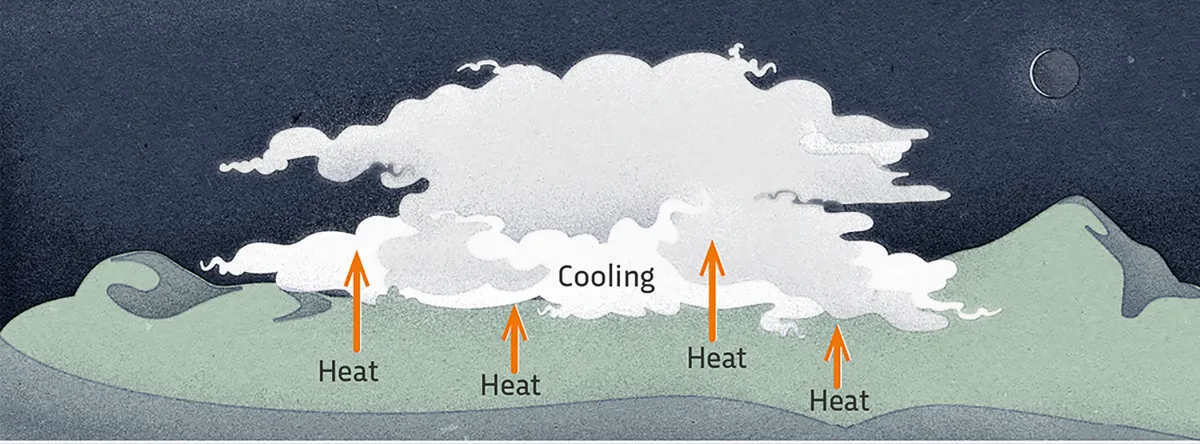
Radiation fog forms over land on calm, clear nights when heat absorbed by the Earth’s surface during the day is radiated into the air. As the heat escapes upwards, air close to the surface is cooled until it reaches saturation.
Cold air holds less water vapour than warm air, and the water vapour condenses into fog. Radiation fog will usually ‘burn off’ as the ground begins to warm again, but during winter months it can persist all day.
Radiation fog is also known as shallow fog or ground fog when it occurs in a narrow enough layer, situated below average eye-level on land (around 2m), or below around 10m at sea.
Valley fog
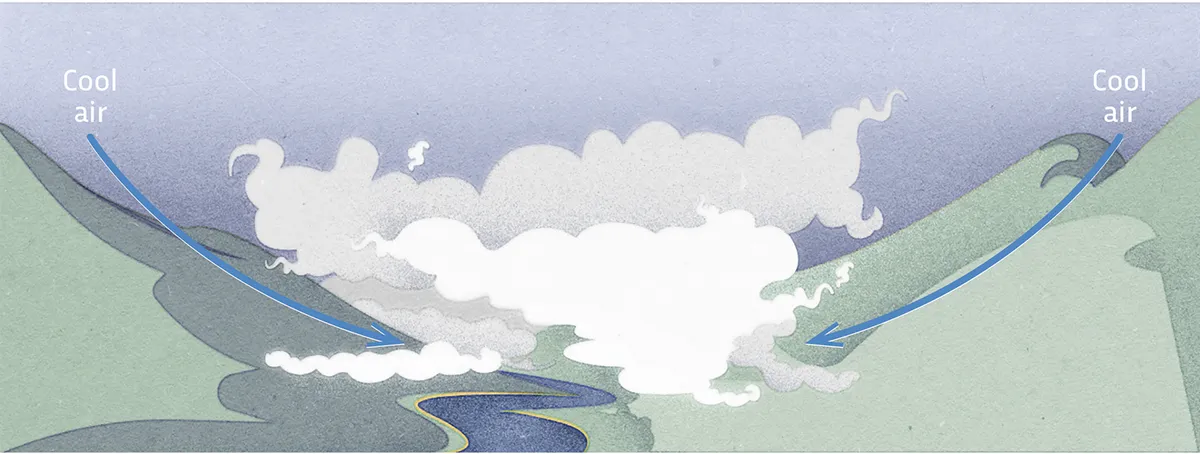
Valley fogusually forms in the lowest parts of a valley as cold, dense air settles and condenses, forming fog. It’s confined by local topography, such as hills or mountains, and can persist for several days.
Advection fog
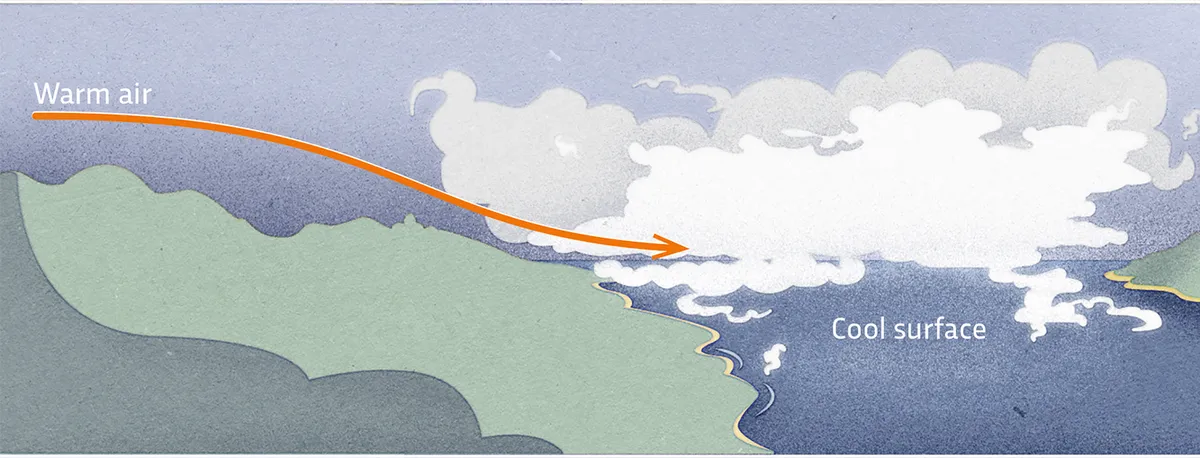
Advection fogforms when horizontal winds push warm, moist, air over a cool surface, where it condenses into fog. It’s common at sea, where warm, tropical air moves over cooler water. Advection fog can cover wide areas, and the Golden Gate Bridge in San Francisco Bay is often shrouded in advection fog.
Sea fog, a type of advection fog, can occur when warm, wet, air rolls off the land and onto the colder sea, or when a warm weather front hits a cold ocean current. In the UK, the north-east coast is very prone to sea fog because of the cold waters of the North Sea.
Upslope fog
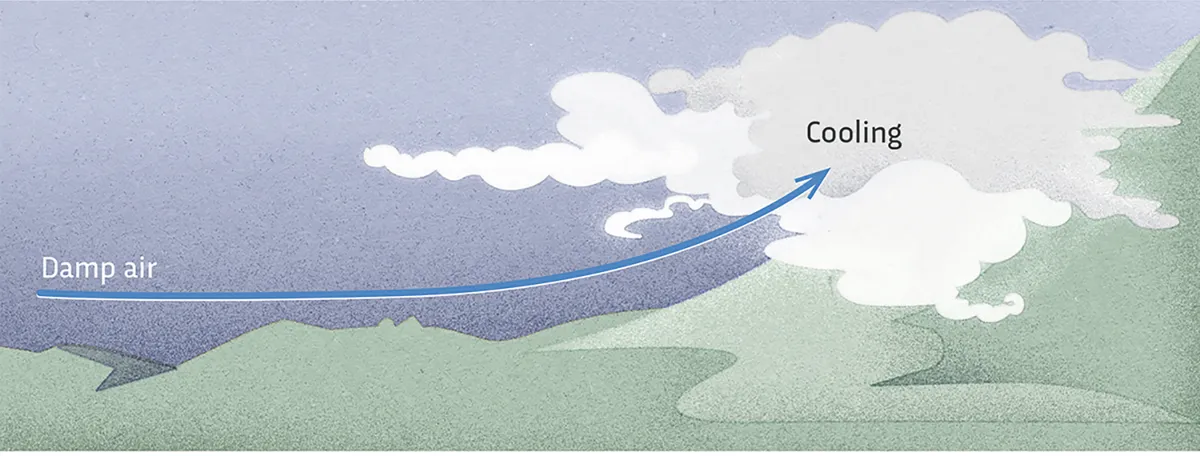
Upslope fog is a type of hill fog and forms when the wind blows moist air up a slope, hill, or mountain, which cools as it rises. As it cools, the moisture condenses, and fog is formed as it continues to drift up the slope.
Evaporation fog
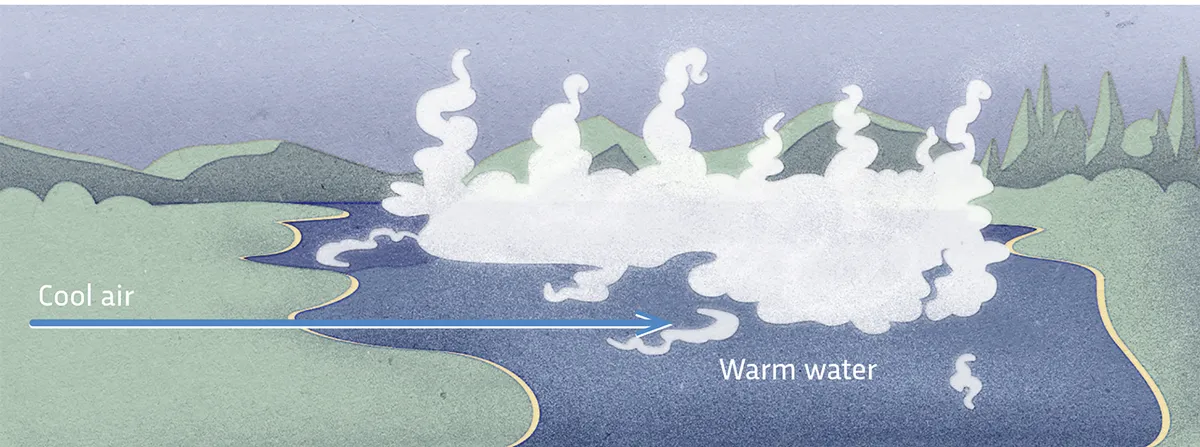
Evaporation fog is similar to advection fog, and forms as cold air passes over moist land or warm water. When the warmer water evaporates into the low bands of air, it warms the air and causes it to rise. As this warm, moist air rises, it mixes with the colder air until its humidity reaches 100 per cent, and fog is formed. You'll often see evaporation fog over lakes, ponds and even outdoor swimming pools.
Why does altitude affect air temperature?
Imagine the atmosphere made up of parcels of air: the higher they are, the less strongly they’re compressed by the weight of the overlying atmosphere, and so the bigger their volume can be. Such expansion requires energy, and as the total energy in the parcel of air is fixed, it comes at the expense of thermal energy – thus lowering the temperature.
Does sound travel further on foggy days?
"Sound travels through the air as pressure waves rhythmically moving air molecules back and forth. Fog contains water droplets that scatter more of the sound energy, thus damping the sound and reducing the distance at which you can hear it," explains physicist Robert Matthews.
So, case closed? Not quite – because both the basic theory and experiments don’t take account of all the conditions under which fog forms.
"On warmer days where the humidity is especially high, the water molecules in the air are more agitated and can only form the tiniest droplets, which have a negligible effect on the sound waves."
"This damp air also has a higher density than dry air, which means that the sound waves can travel more effectively and be heard over a greater distance," Matthews adds.

About our expert, Professor Robert Matthews
After studying physics at Oxford, Robert became a science writer. He’s visiting professor in science at Aston University.
Read more about fog:
Asked by: Rich French, London
To submit your questions email us at questions@sciencefocus.com (don't forget to include your name and location)
